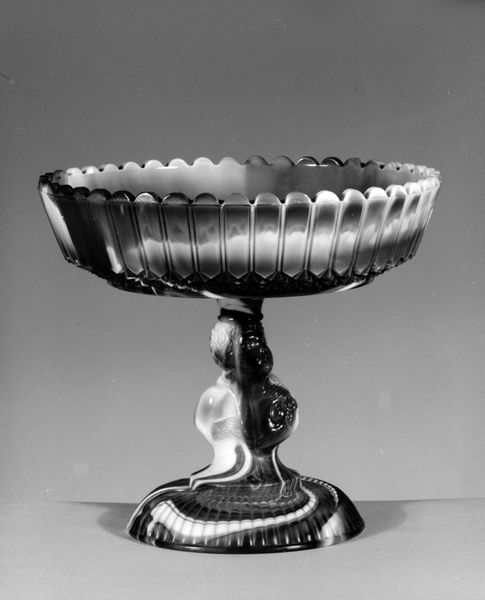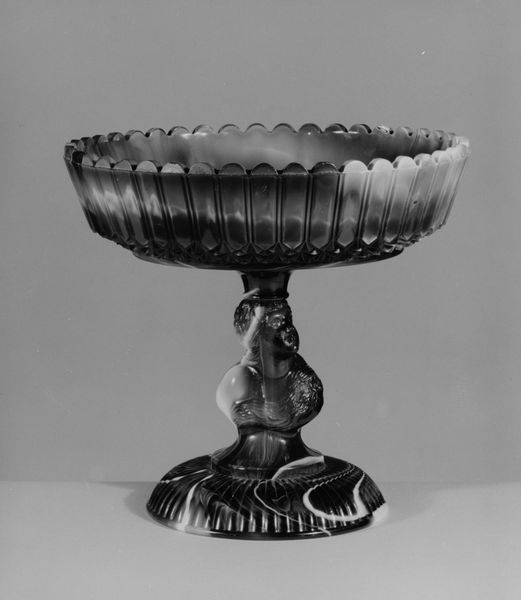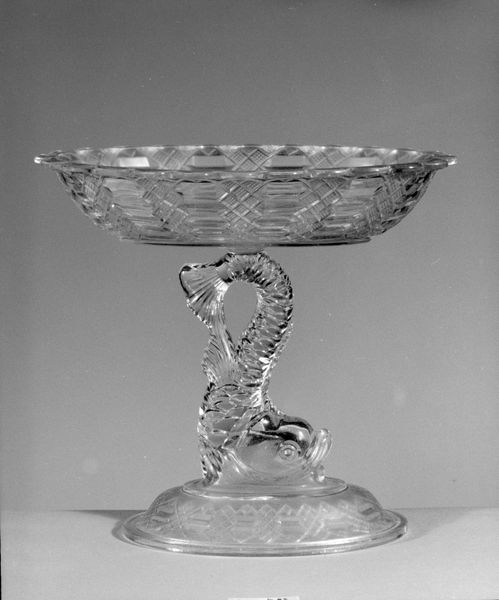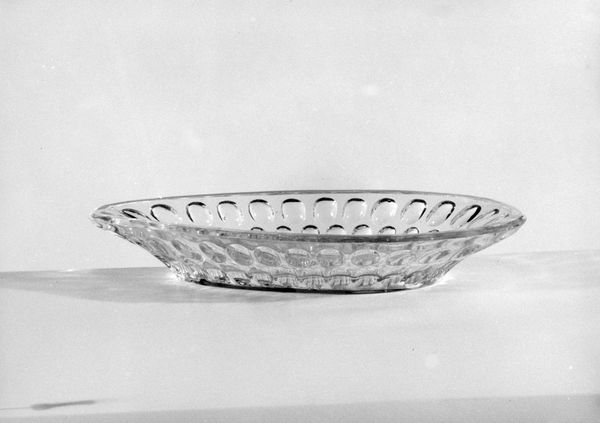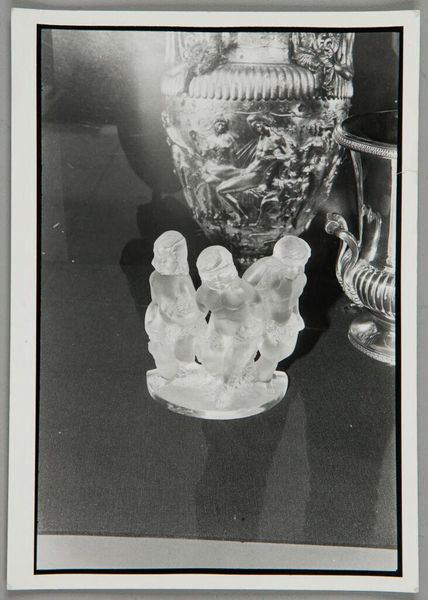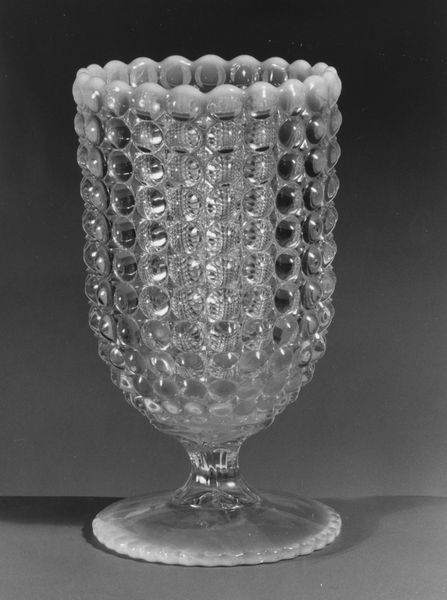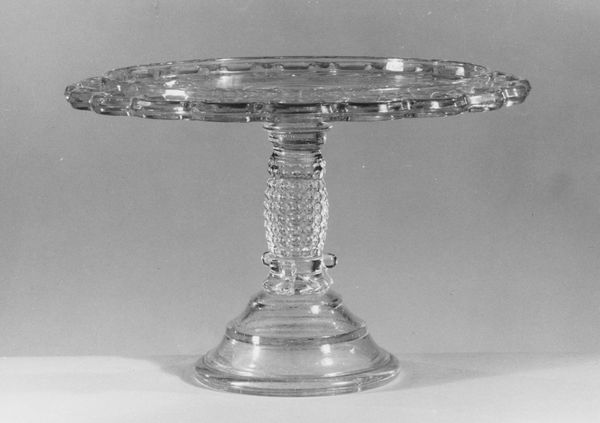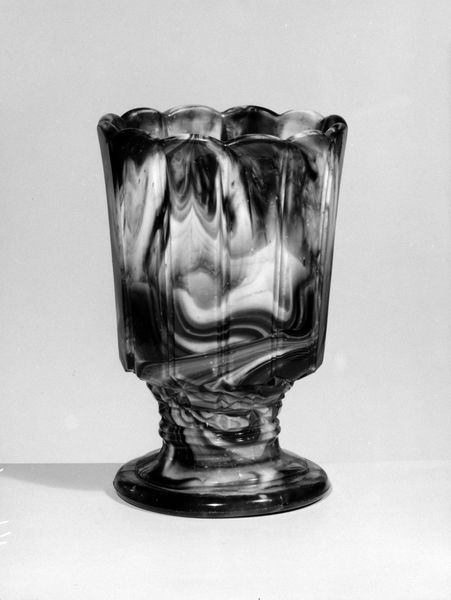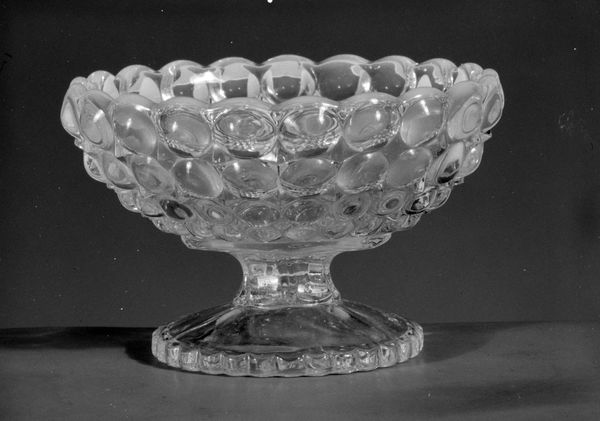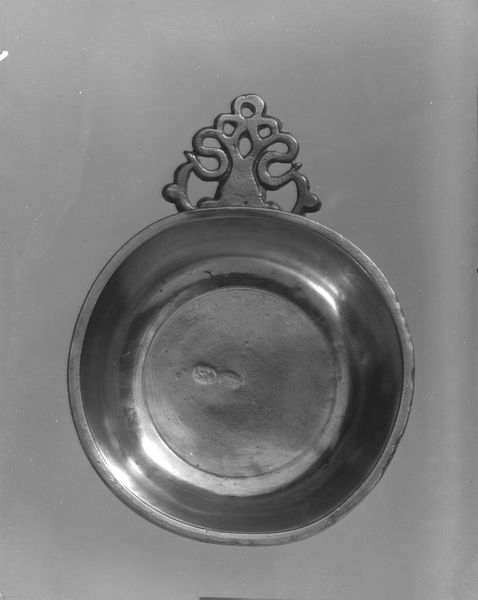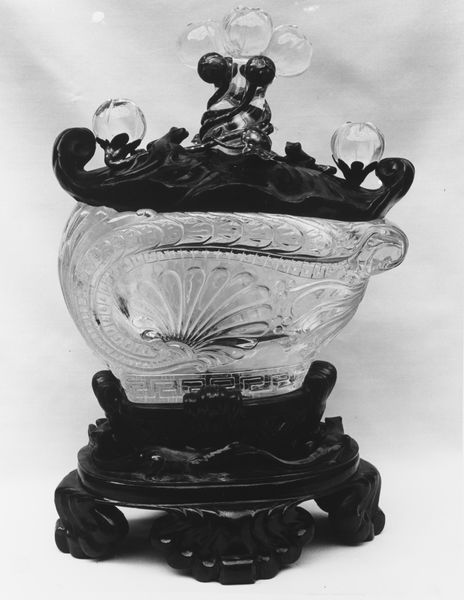
photography, glass, sculpture
#
sculpture
#
photography
#
glass
#
geometric
#
sculpture
#
black and white
#
monochrome
#
monochrome
Dimensions: H. 9 1/8 in. (23.2 cm); Diam. 10 1/2 in. (26.7 cm)
Copyright: Public Domain
Curator: Well, hello there, gazing at this picture of what is labelled, rather straightforwardly, "Compote". Its attribution goes to Bakewell, Pears and Company and was made sometime between 1860 and 1880. Materially, we’re looking at glass. Editor: Ah, yes. The cool elegance, all frosted monochrome like a dream seen through sea glass. It feels simultaneously delicate and…powerful, in a strange way? Like Poseidon’s Tupperware. Curator: "Poseidon’s Tupperware"—I like that. The compote shape—essentially a footed dish—enjoyed enormous popularity during the mid-19th century. Remember that industrialization was changing processes, permitting the mass production of elaborate glassware. The American glass industry flourished during this period, becoming quite competitive with European makers. Bakewell, Pears and Company were based in Pittsburgh. Editor: Pittsburgh! The opposite of Poseidon's watery kingdom, isn't it? Though I imagine those factory workers thought of their foundries as similarly deep and dangerous places. Looking closer at the fish form, there’s something slightly melancholy in its glass eyes. Curator: Mass production doesn't mean simplicity; notice how the stem rises into a beautifully rendered fish, which is perched on a kind of hemispherical base, echoing classical sculpture but rendered with a fresh sensibility, as opposed to traditional methods. And on top is this almost scalloped looking bowl. Think of the artistry and craft alongside the manufacturing efficiencies! Editor: Right, all those folks involved: the designers, the mold-makers, the finishers polishing each piece. Suddenly I’m wondering about breakages, factory conditions, the hidden stories within its shimmering form… the quiet drama in the geometry and labor of it all. Curator: Exactly. This object, displayed in the Met, serves as a wonderful example, inviting us to consider the broader societal context of production. It serves both a practical and decorative function and exists beyond pure ornamentation. Editor: Looking at this picture again, its ethereal glow still whispers secrets from a long gone era. And, I'm struck by how beautifully mundane objects like this manage to hold history within them. Curator: Precisely, and isn't that interplay of artistry and industry precisely what brings the piece to life, even across centuries?
Comments
No comments
Be the first to comment and join the conversation on the ultimate creative platform.
